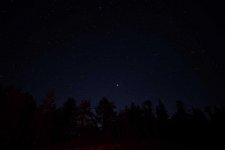PlanetMaker
Well-known member
When first using the Swarovski SLC 15x56 for planet observation I was a little disappointed with a slight flare off the bright planets.
But when observing these same planets (Mars, Jupiter, Venus recently) before dusk, and dawn, all the planets are perfectly round except Venus with a half crest but needs to be observed the soonest to see it as a crest with the 15x56.
Mars at dawn gives me a perfectly round planet also.
I imagine a neutral density transmission filter would remove the flare at night but would it be worth it?
Or stick to excellent star observing and forget bright planets like Jupiter, Saturn and Venus in the dead of night?
But when observing these same planets (Mars, Jupiter, Venus recently) before dusk, and dawn, all the planets are perfectly round except Venus with a half crest but needs to be observed the soonest to see it as a crest with the 15x56.
Mars at dawn gives me a perfectly round planet also.
I imagine a neutral density transmission filter would remove the flare at night but would it be worth it?
Or stick to excellent star observing and forget bright planets like Jupiter, Saturn and Venus in the dead of night?




